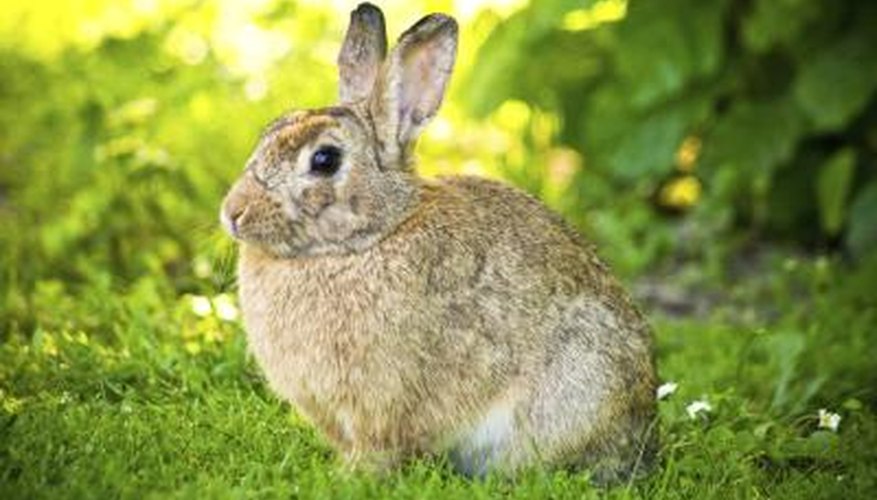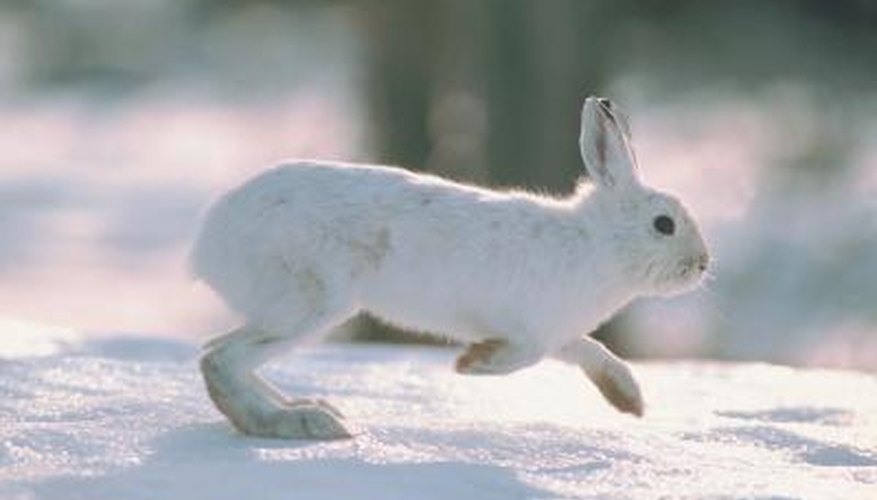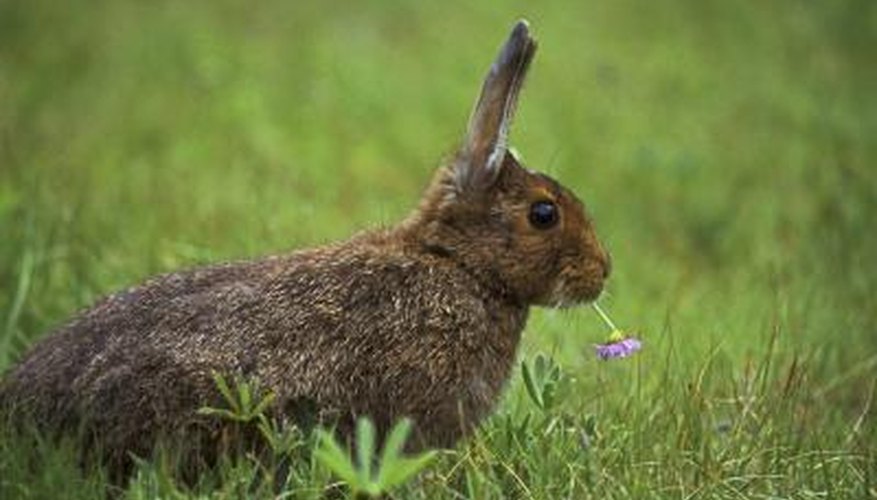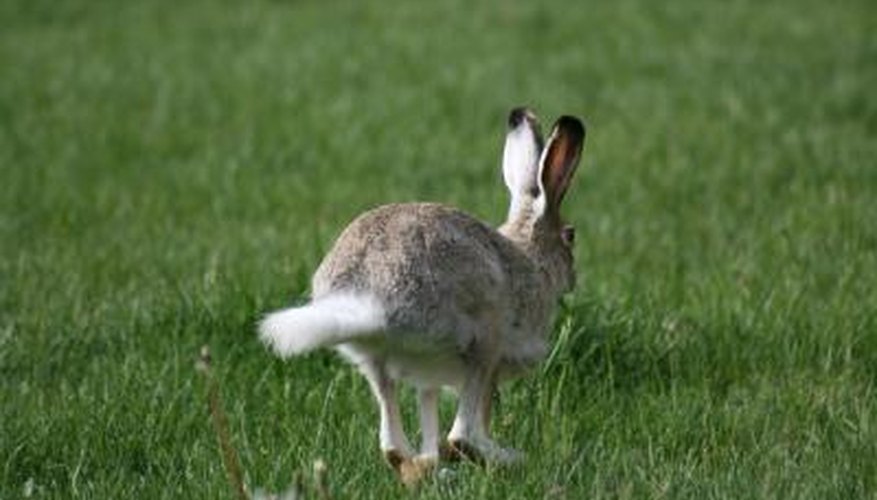
Rabbits belong to the Lagomoprha family which includes hares and pikas. A common misconception is that rabbits are rodents; they are not. Rabbits have four incisors in the upper jaw where rodents have only two. Rabbits are strict vegetarians where some rodents will eat animals and carrion. Rabbits are found throughout the United States and have adapted to survive in the various climates. Through the evolutionary process of natural selection, rabbits now have many physical adaptations that allow them to thrive and survive.
Ears

MichaelStubblefield/iStock/Getty Images
The rabbits ears serve many survival functions. One often unknown fact about rabbit ears, particularly for the rabbits that live in hot desert regions, is that the ears become "air conditioners" for the animal. The large ears radiate heat, allowing for self-thermoregulation. In addition, the large ears allow them to hear predators providing them with extra time to flee or freeze.
Large Feet

Jupiterimages/Photos.com/Getty Images
The rabbits feet are not just lucky, they let the bunny move through soft sand, snow or mud. The large feet of the rabbit act like "snowshoes" and provide needed float in soft terrain. This is especially helpful when they are running from predator species such as fox or lynx.
Teeth

Purestock/Purestock/Getty Images
Members of the lagomorph family have four incisors on the upper jaw. These extra teeth allow the rabbits to chew and gnaw through tough plant material. As rabbits maintain a strict vegetarian diet, this adaptation is very important when the area they inhabit is full of hard and fibrous plant life. The front teeth of the rabbit never stop growing. As a result, the rabbit needs to gnaw and chew through the plant life to keep the teeth eroded, thus ensuring their survival.
Tail

Steven Wilson/iStock/Getty Images
The small and ball-shaped tail of the rabbit serves a vital purpose. During flight from predators in vegetated areas, a long and bushy tail would hinder or snag in the plant life. The small cotton tail does not get stuck nor extend out preventing predators from latching on.
References
Writer Bio
A former Alaskan of 20 years, Eric Cedric now resides in California. He's published in "Outside" and "Backpacker" and has written a book on life in small-town Alaska, "North by Southeast." Cedric was a professional mountain guide and backcountry expedition leader for 18 years. He worked in Russia, Iceland, Greece, Turkey and Belize. Cedric attended Syracuse University and is a private pilot.



